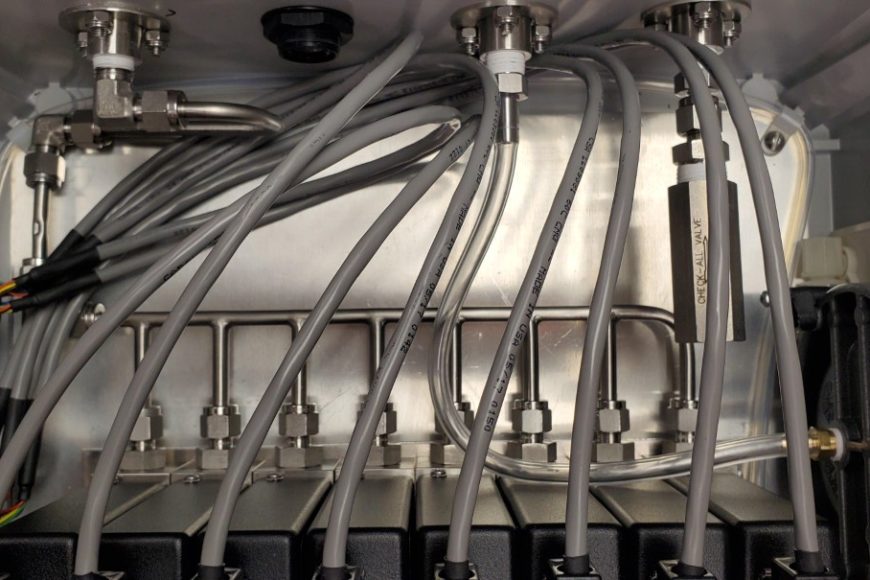
Gas chromatography (GC) is an extremely useful technique due to its extensive sensitivity, speed, selectivity, and ability to examine complicated mixtures that contain a variety of components. Its capabilities mean it has a range of applications, from examining toxins and drugs in forensic science to being applied to quality control within manufacturing procedures. With so many depending on the results of GC, it’s important to maintain its precision through calibration. GC calibration can be achieved through multi-component internal standards. Utilizing gaseous mixtures as standards can enhance the accuracy of the calibration and correct any matrix effects. Let’s have a look at how these standards are prepared so they can be used for GC calibration.
1. Selecting the Right Internal Standards
The first and most critical step is selecting internal standards that closely resemble the analytes of interest in both chemical structure and behavior during GC analysis. An ideal internal standard should have a similar retention time and response factor as the analytes, ensuring it does not interfere with their detection. This similarity ensures that variations in sample preparation and instrument performance equally affect both the analytes and the internal standards, enabling more accurate quantification.
2. Preparing Standard Gaseous Mixtures
To ensure accurate calibration, gaseous mixtures are prepared by combining known quantities of the analytes and internal standards with a balance gas. This process involves using high-purity gases, ensuring precise control over gas concentrations. It’s essential to use certified reference gases to prevent contamination and guarantee consistent results across your calibration standards.
3. Mixing and Maintaining Consistency
Once the gaseous mixtures are prepared, precise ratios between the internal standards and analytes must be maintained across all calibration standards. This ensures the calibration curve accurately reflects the relationship between the analytes’ concentration and the instrument’s response.
4. Constructing the Calibration Curve
With your mixed standards ready, the next step is to measure the instrumental response. For each standard, measure the ratio of the analyte signal to the internal standard signal. Plotting these ratios against the known concentrations of the analytes will yield a calibration curve. This curve is fundamental for quantitative analysis. It allows you to determine the concentrations of analytes in unknown samples. This is through comparing their signal ratios to those of the calibration standards.
5. Analyzing Data and Ensuring Accuracy
The calibration curve is only as good as the data that goes into it. To ensure accuracy, regularly validate your calibration method by checking the linearity, accuracy, and precision of the curve. Regular performance checks are necessary to account for any instrument drift or sample loss. These could compromise the accuracy of your analysis.
6. Leveraging Environics’ Gas Mixing Systems
Environics offers advanced gas mixing systems that are invaluable in preparing multi-component internal standards for GC calibration. The Series 4000 and Series 4000 UHP (Ultra-High Purity) systems are particularly suited for this purpose. These systems can automatically mix up to seven individual gases. This can allow for precise control over gas concentrations from percent to parts per billion (ppb) levels. With features like automatic dilution calculations and support for multiple mass flow controllers, these systems ensure high accuracy and repeatability in generating gas calibration standards.
- Series 4000: Ideal for producing gas concentrations for single or multi-point calibration, this system supports up to eight mass flow controllers, factory calibrated to NIST standards. It is suitable for a number of applications, including environmental monitoring and industrial processes.
- Series 4000 UHP: Designed for ultra-high purity applications, this system features metal seal mass flow controllers and orbitally welded joints, making it perfect for industries where minimal atmospheric contamination is crucial.
Undertake GC Calibration With Equipment From Environics
Accurate GC calibration is essential for reliable chemical analysis. By carefully selecting internal standards, preparing consistent solutions, and utilizing advanced mixing systems, like those offered by Environics, you can significantly improve the precision and accuracy of your GC results. Whether you’re in environmental monitoring, pharmaceuticals, or industrial applications, these steps will help you achieve the best possible outcomes in your chemical analysis.
For more information on how Environics can assist with your GC calibration needs, explore our products, such as our Series 6103, our multi-gas calibrator, or speak with our experts about GC calibration today.

